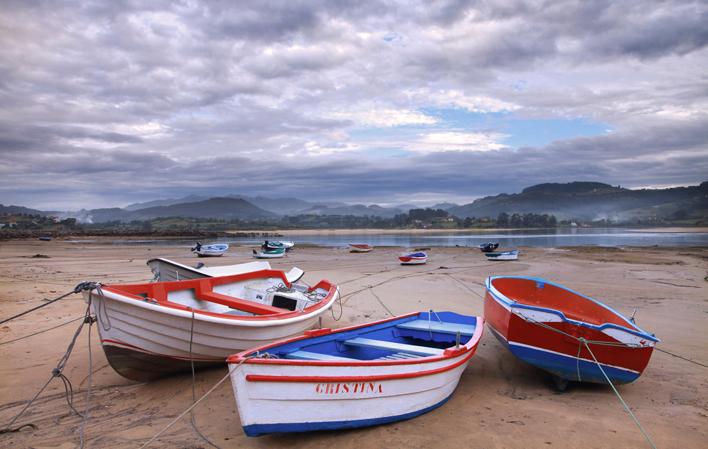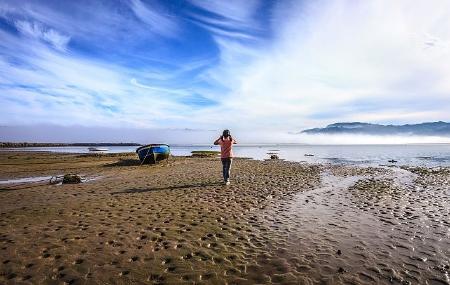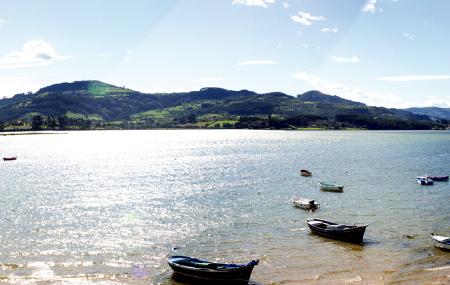
Ría de Villaviciosa Partial Nature Reserve
- Title Villaviciosa Eastern Asturias
- Extension Extension: 10 km 2
- Open to the public Open to the public: Preferably at low tide
Images
Info
Unleashed dogs (and other pets) are not allowed in the special restricted use area and in the moderate use area. Unleashed dogs are expressly prohibited on beaches.
An estuary considered to be of high ecological value in which its halophilic and subhalophilic vegetation, its faunal importance, especially ornithological, and the great variety of units that are generated in its interior stand out.
The estuary opens wide near Tazones, between the beaches of El Puntal and Rodiles, and gradually narrows until it reaches the very centre of Villaviciosa, reaching the "porreos", the name given in the area to the land that has been reclaimed from the sea, where you can find sub-halophilic meadows with channels and ponds of great interest.
The territory it occupies can be divided into four areas; the complex at its mouth, where the Rodiles beach is located; the sandy bay, which develops mostly on the Misiego inlet; the muddy plains, a place of passage for innumerable species of sea birds of great ecological interest; and the upper channel, where the fluvial influence is more dominant.
The softness of the forests that surround the valleys of the region make them incomparable places for hiking, and when you reach the heights with their impressive views you will find an ideal place for paragliding or hang gliding.
Along the coast and the banks of the estuary it is possible to practice a large number of nautical activities: surfing, windsurfing, canoeing and sailing for the more adventurous, and relaxing boat trips along the estuary for lovers of the scenery.
As for the climate, the region in which the Villaviciosa estuary is located is an area of mild temperatures, where frosts are rare, especially near the sea.
Plant life
The general characteristics of the vegetation of this estuary are common to the rest of the estuaries of the Eastern Cantabrian. It is, however, the only estuary of this type in Asturias.
Various plant communities grow in the muds flooded daily by the tides. In the lower stratum there are meadows of Zostera noltii, which, in some slightly higher points, are accompanied by stands of Spartina marítima, a species which has its only locality here in the Principality.
Above these monospecific meadows grow halophilic scrubland, which is very diversified in this estuary. The most outstanding, unparalleled along the entire Cantabrian coast, are those formed by a halophilic sub-shrub: Suaeda vera.
Wildlife
The amateur naturalist and, in particular, the birdwatcher, will find here a wide representation of marshland species. Some are sedentary, others are wintering and there are abundant species during the autumn migration. The Villaviciosa estuary is considered, after the Eo estuary, as the second wintering and migratory resting area in the Principality of Asturias for European waterfowl populations. Almost a hundred of these species have been identified, belonging to a total of 16 families, which makes it worthy, according to the Spanish Ornithological Society, of the category of Wetland of National Importance. An officially protected area as a Bird Refuge of the Villaviciosa Estuary, which is considered a Hunting Refuge with an area of 1,500 hectares.
The spatial distribution of waterbirds varies according to the tides. During low tide, the waders are distributed throughout the mud meadows, also occupying shallow water areas and canals. The surrounding meadows and meadows also host large numbers of waterfowl, especially during the periods of temperate runaways.
Map
Location
The Villaviciosa estuary is located on the central-eastern coast of Asturias, some 30 kilometres east of Gijón. It is included in its entirety in the council of Villaviciosa.
Puntal Interpretation Centre, Villaviciosa:
Every day from 10:00 to 14:00 and 15:00 to 18:30 h.
Rodiles Information Point:
Friday to Sunday from 10:00 to 14:00 and 15:00 to 18:30 h.



